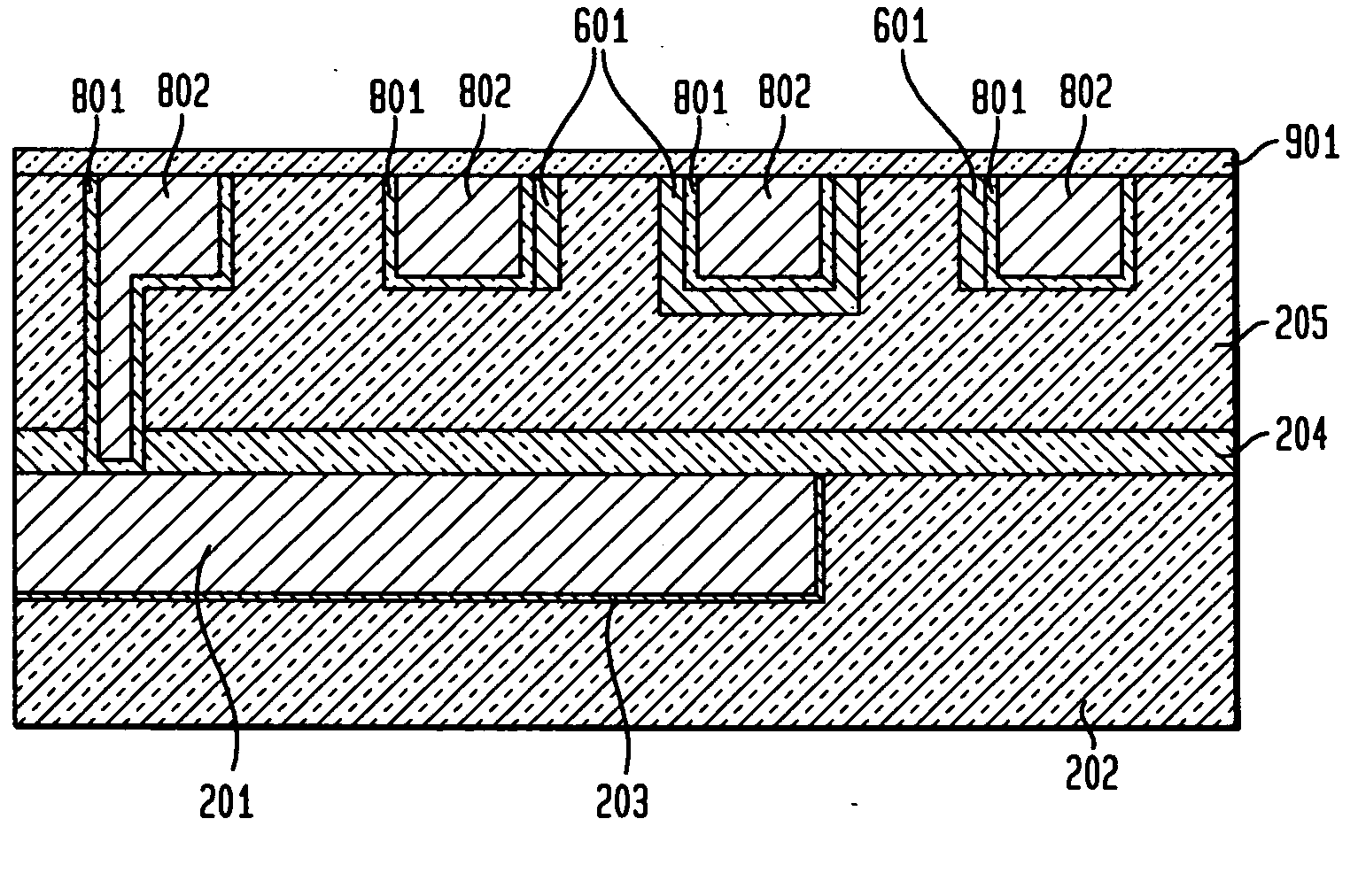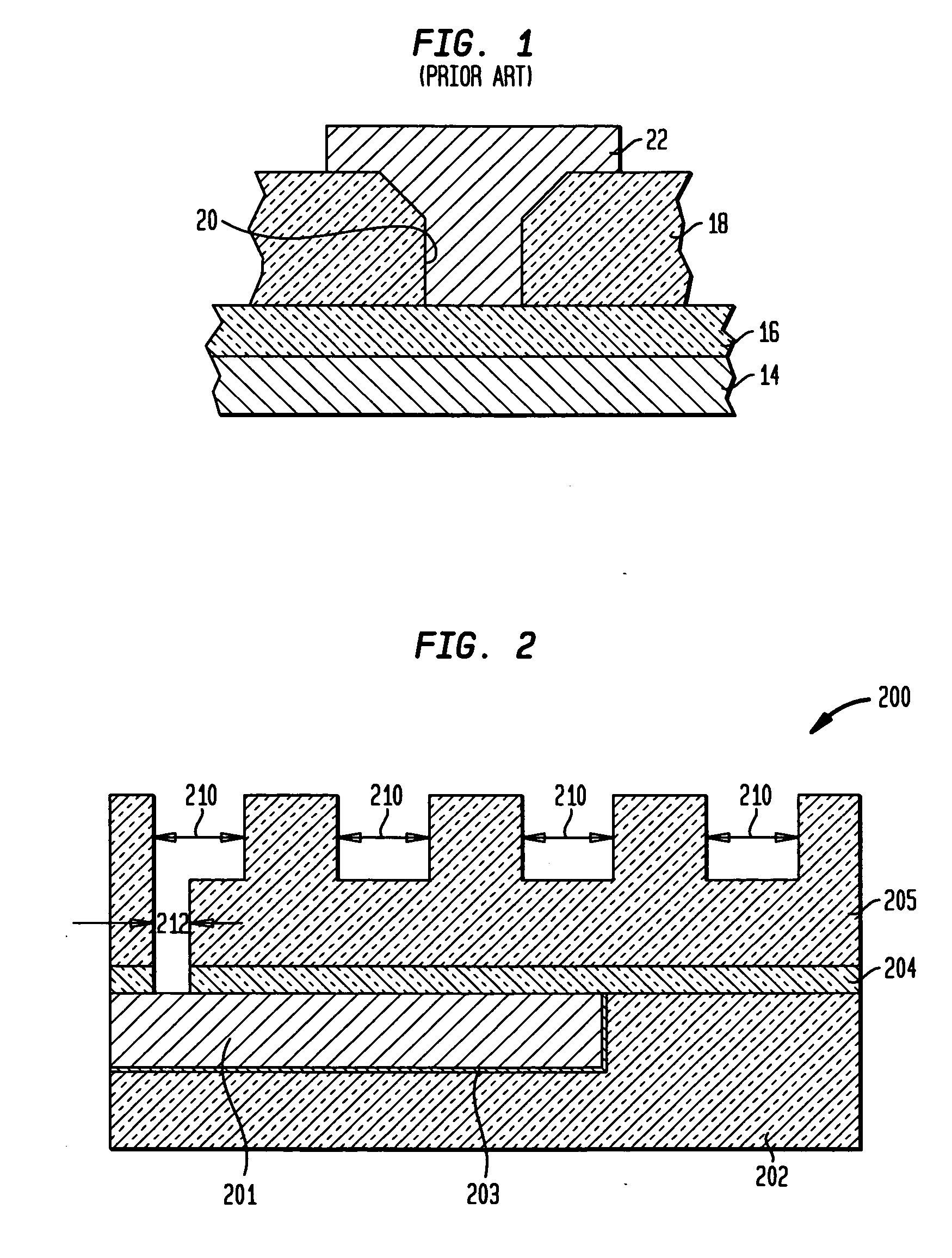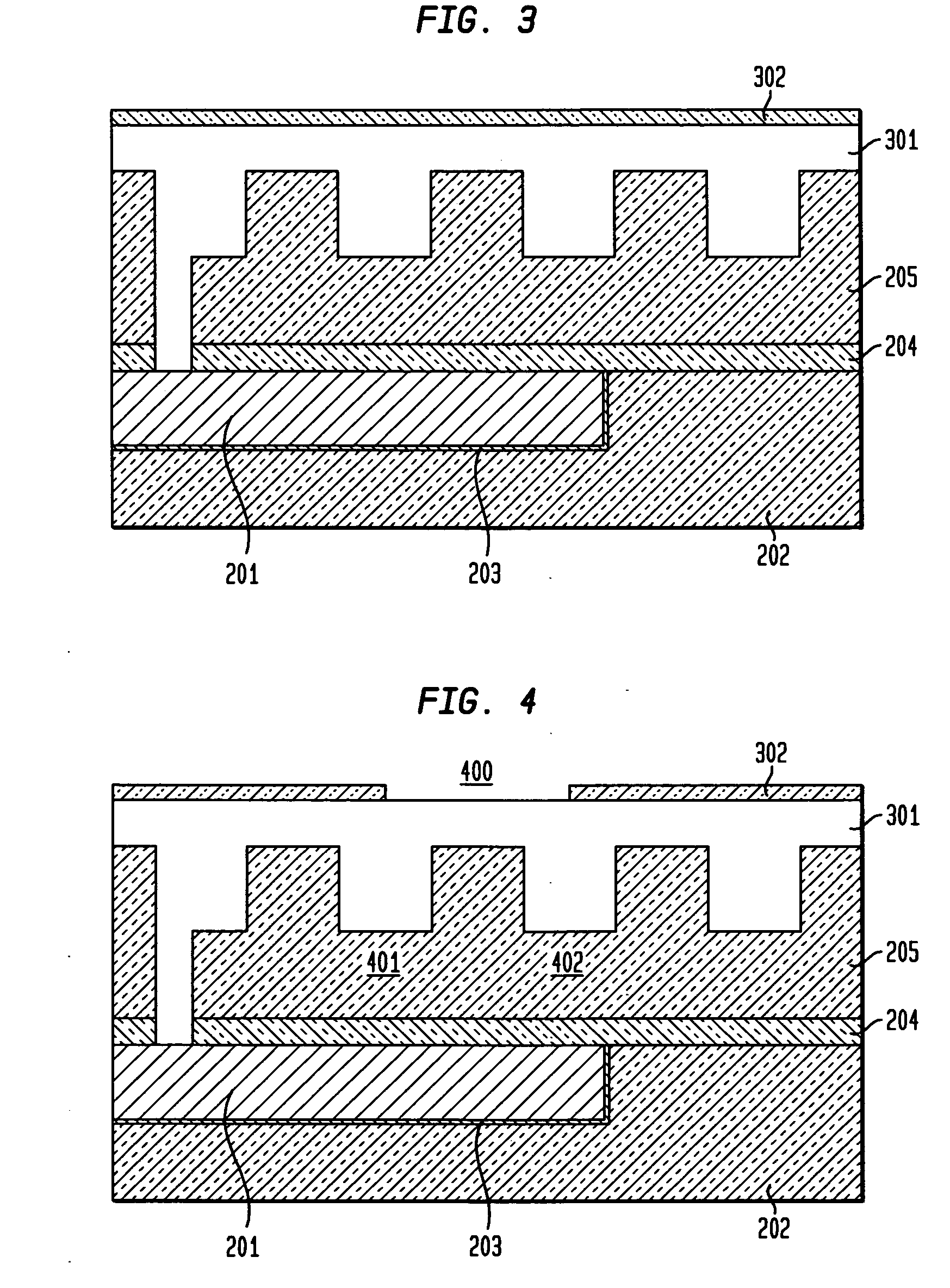Adopting feature of buried electrically conductive layer in dielectrics for electrical anti-fuse application
- Summary
- Abstract
- Description
- Claims
- Application Information
AI Technical Summary
Benefits of technology
Problems solved by technology
Method used
Image
Examples
Embodiment Construction
[0019] The present invention, which provides an anti-fuse structure including a specially modified anti-fuse material (or the buried electrically conductive) layer and a method of fabricating the same, will now be described in greater detail by referring to the following discussion and drawings that accompany the present application. It is noted that the drawings are provided for illustrative purposes and, as such, the drawings are not drawn to scale.
[0020] As stated above, the present invention provides an anti-fuse structure that includes a buried electrically conductive layer as an anti-fuse as well as a method of forming such an anti-fuse structure. According to the present invention, the inventive anti-fuse structure comprises regions of leaky dielectric between interconnects. The term “leaky dielectric” is used in the present application to describe a region of dielectric material between adjacent interconnects, and the region of dielectric is embedded with an electrically co...
PUM
 Login to View More
Login to View More Abstract
Description
Claims
Application Information
 Login to View More
Login to View More - R&D
- Intellectual Property
- Life Sciences
- Materials
- Tech Scout
- Unparalleled Data Quality
- Higher Quality Content
- 60% Fewer Hallucinations
Browse by: Latest US Patents, China's latest patents, Technical Efficacy Thesaurus, Application Domain, Technology Topic, Popular Technical Reports.
© 2025 PatSnap. All rights reserved.Legal|Privacy policy|Modern Slavery Act Transparency Statement|Sitemap|About US| Contact US: help@patsnap.com



